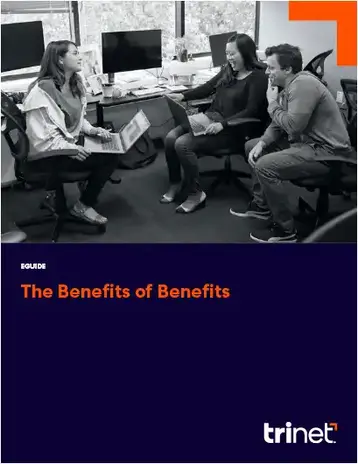
A health savings account (HSA) is like a personal savings account but the money is earmarked for qualified medical expenses. These accounts are funded by employees, employers, or both. Employees decide how much of their pre-tax earnings to contribute. Pre-tax means you don’t pay income tax on the money put into these accounts. HSA contributions are subject to calendar year annual limits set by the IRS.
“What can I use my HSA for?” is a frequently asked question from employees with this benefit. The Internal Revenue Service determines qualified healthcare expenses, including prescriptions, medical supplies and physician visits. This article provides general information about HSAs and the rules regarding the variety of medical services and products they cover.
Who Can Get an HSA?
HSAs are an effective way to save money to help offset healthcare expenses, but they are not available to everyone. They are limited to those enrolled in a qualifying high deductible health plan (HDHP) and have no other impermissible coverage.
To qualify as an HDHP, the health insurance plan must have a minimum annual deductible, which the IRS adjusts annually. While the monthly HDHP rates are generally lower than other insurance plans, employees may pay more out-of-pocket costs before the insurance company pays. Plans in the insurance marketplace that meet this standard have an HSA-eligible label.
HSA vs. FSA
An HSA and a flexible spending account (FSA) both help pay for qualified medical expenses. They have several differences.
HSAs are managed by employees, while FSAs are managed and sponsored by employers. HSAs have a higher contribution limit than FSAs. For HSAs, unused funds roll over to the next year. All FSA funds must generally be used during the benefits plan year or they will be lost.
What Are Qualified Medical Expenses?
The federal government dictates and updates the health care expenses that can be paid with HSA funds. This could include any legal medical service that a physician, dentist or healthcare practitioner provides that isn’t covered fully by a health insurance provider, including Medicare. It’s used to pay deductibles, copays and coinsurance fees.
The U.S. Department of Health & Human Services defines qualified medical expenses as any medical expense that someone might otherwise deduct on a federal income tax form. The following are some commonly covered expenses:
● Doctor visits.
● Lab tests.
● Hospital stays.
● Dental expenses and vision care.
● Medical transportation expenses, such as ambulance services.
More specifically, HSA funds might cover acupuncture, contact lens solution, smoking-cessation programs, breast pumps, and the adoption of service animals. There are caveats throughout the list of eligible products and services, as some are only covered with a prescription.
What isn’t a qualified medical expense?
The list of non-qualified expenses includes things such as cosmetic surgery, maternity clothes and childcare.
Another item that you can’t use your HSA for is health insurance premiums. The exceptions to this rule are:
- Medicare.
- COBRA.
- Long-term care insurance.
Prescription and Over-the-Counter Medications
In March 2020, Congress added over-the-counter drugs (OTC) to the list of qualified medical expenses for HSAs. These include common OTCs such as pain relievers, cold and flu remedies, antacids and feminine care products.
HSA funds can go toward things to keep you or your eligible dependents protected, too. For example, sunscreen and other SPF products such as lip balm.
You can also use HSA funds for things like braces or adaptive devices such as hearing aids or eyeglasses. There are a few limitations, so it is always wise to check with a pharmacist or healthcare provider first.
Also on the list of eligible expenses is prescription medication. You can use HSA to pay the full cost of the medication, deductibles, copays and coinsurance fees.
Can You Use HSA for Non-Medical Expenses?
It’s your money, so using your HSA for non-medical expenses is an option. But what happens if you use your HSA for non-medical expenses? Here’s what to consider.
Any withdrawn funds that are not used for eligible medical expenses are included in gross income and may be subjected to taxation. In addition, if HSA funds are withdrawn before age 65 and not used for eligible medical expenses are generally subject to an additional 20% tax penalty.
In other words, you may lose the tax benefits when you use HSA for non-medical expenses. There may also be a significant tax fee or penalty.
For ongoing support along your business and career management journey, visit TriNet daily.






